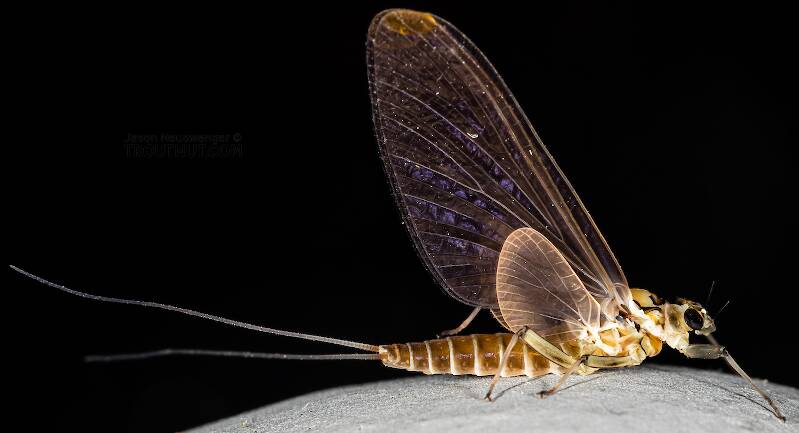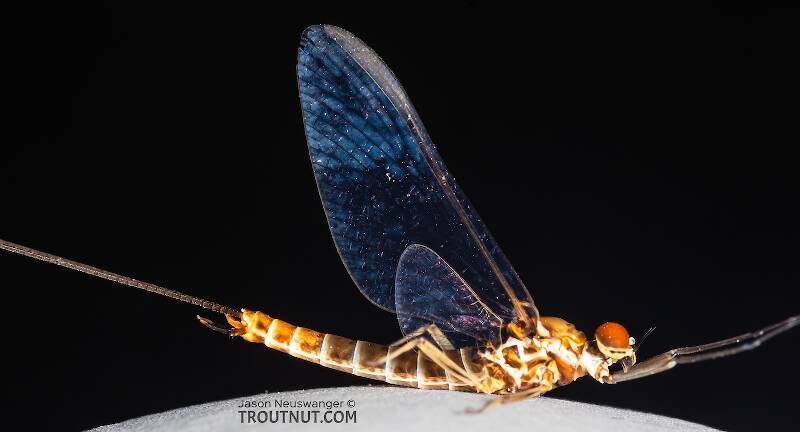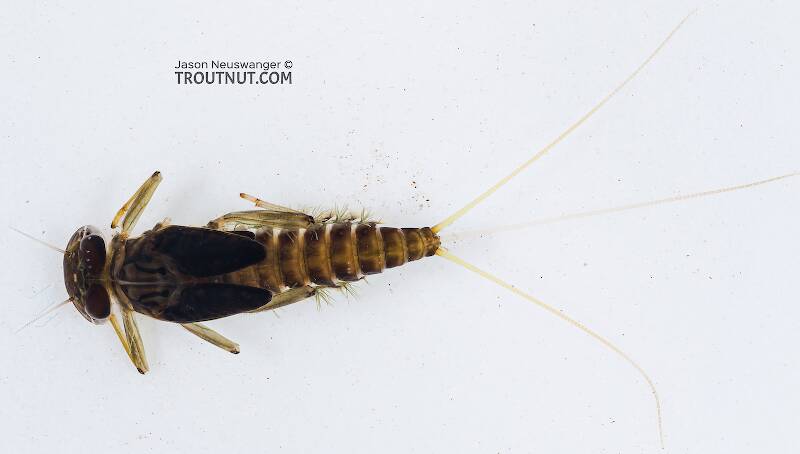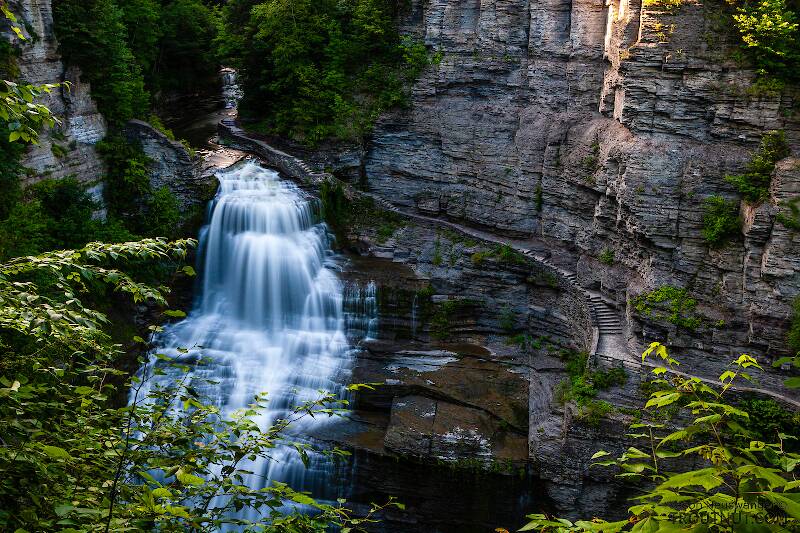
Blue-winged Olives
Baetis
Tiny Baetis mayflies are perhaps the most commonly encountered and imitated by anglers on all American trout streams due to their great abundance, widespread distribution, and trout-friendly emergence habits.
Featured on the forum

This one seems to lead to Couplet 35 of the Key to Genera of Perlodidae Nymphs and the genus Isoperla, but I'm skeptical that's correct based on the general look. I need to get it under the microscope to review several choices in the key, and it'll probably end up a different Perlodidae.

Troutnut is a project started in 2003 by salmonid ecologist Jason "Troutnut" Neuswanger to help anglers and
fly tyers unabashedly embrace the entomological side of the sport. Learn more about Troutnut or
support the project for an enhanced experience here.
Dark Tan Spinners
This common name refers to only one species. Click its scientific name to learn more.
Mayfly Species Rhithrogena hageni
These are sometimes called Dark Tan Spinners.
According to Fred Arbona in Mayflies, the Angler, and the Trout, this is an excellent hatch and one of the most common fast-water mayflies in the West.

I was surprised by the olive cast on the body of this female Rhithrogena dun, which led me to mistake it for a western green drake (Drunella) in the field. I was pleasantly surprised to get a closer look and find something I hadn't collected yet. Its species ID is based on proximity to male spinner collected on the same trip, as well as physical similarity (size, tergite coloration, dark streaks on the femora) to that specimen.

Although I could not find the preserved specimen to examine under my good new microscope, I'm tentatively calling it one Rhithrogena hageni, based on apparent similarity to this specimen, which I was able to positively ID.
The relative angle of the penes is a bit shallower in this specimen, but I photographed another specimen from the same collecting trip (and I think even the same swarm, although I don't recall for sure) as the other one, and it had the shallower angle seen on this specimen. I'm guessing it's just variation within the species.
The relative angle of the penes is a bit shallower in this specimen, but I photographed another specimen from the same collecting trip (and I think even the same swarm, although I don't recall for sure) as the other one, and it had the shallower angle seen on this specimen. I'm guessing it's just variation within the species.

This mature nymph was collected in the same riffle as a male spinner, from which I got the identification for both.
See 3 more specimens...
References
- Arbona, Fred Jr. 1989. Mayflies, the Angler, and the Trout. Nick Lyons Books.

